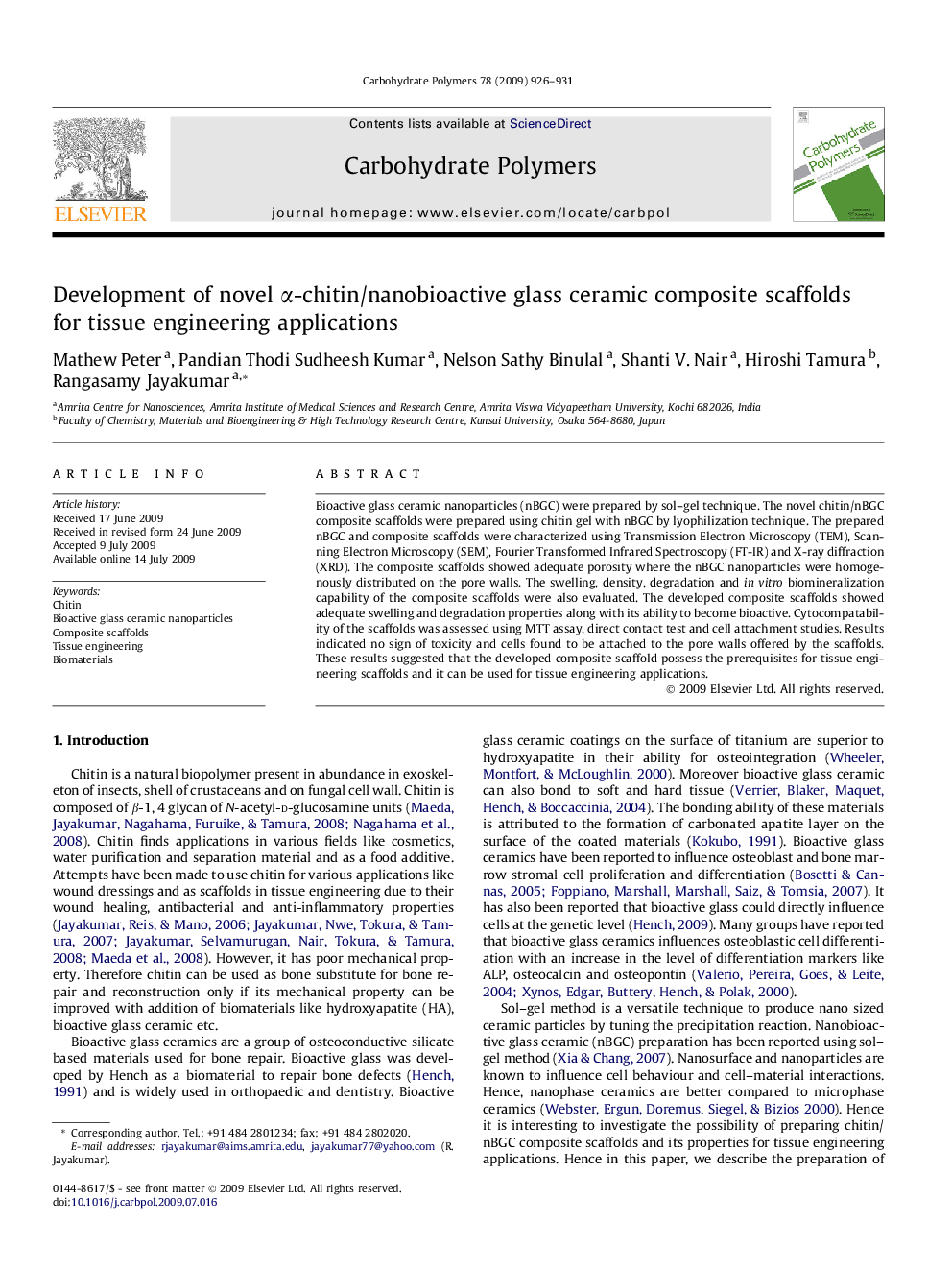| Article ID | Journal | Published Year | Pages | File Type |
|---|---|---|---|---|
| 1378421 | Carbohydrate Polymers | 2009 | 6 Pages |
Bioactive glass ceramic nanoparticles (nBGC) were prepared by sol–gel technique. The novel chitin/nBGC composite scaffolds were prepared using chitin gel with nBGC by lyophilization technique. The prepared nBGC and composite scaffolds were characterized using Transmission Electron Microscopy (TEM), Scanning Electron Microscopy (SEM), Fourier Transformed Infrared Spectroscopy (FT-IR) and X-ray diffraction (XRD). The composite scaffolds showed adequate porosity where the nBGC nanoparticles were homogenously distributed on the pore walls. The swelling, density, degradation and in vitro biomineralization capability of the composite scaffolds were also evaluated. The developed composite scaffolds showed adequate swelling and degradation properties along with its ability to become bioactive. Cytocompatability of the scaffolds was assessed using MTT assay, direct contact test and cell attachment studies. Results indicated no sign of toxicity and cells found to be attached to the pore walls offered by the scaffolds. These results suggested that the developed composite scaffold possess the prerequisites for tissue engineering scaffolds and it can be used for tissue engineering applications.
